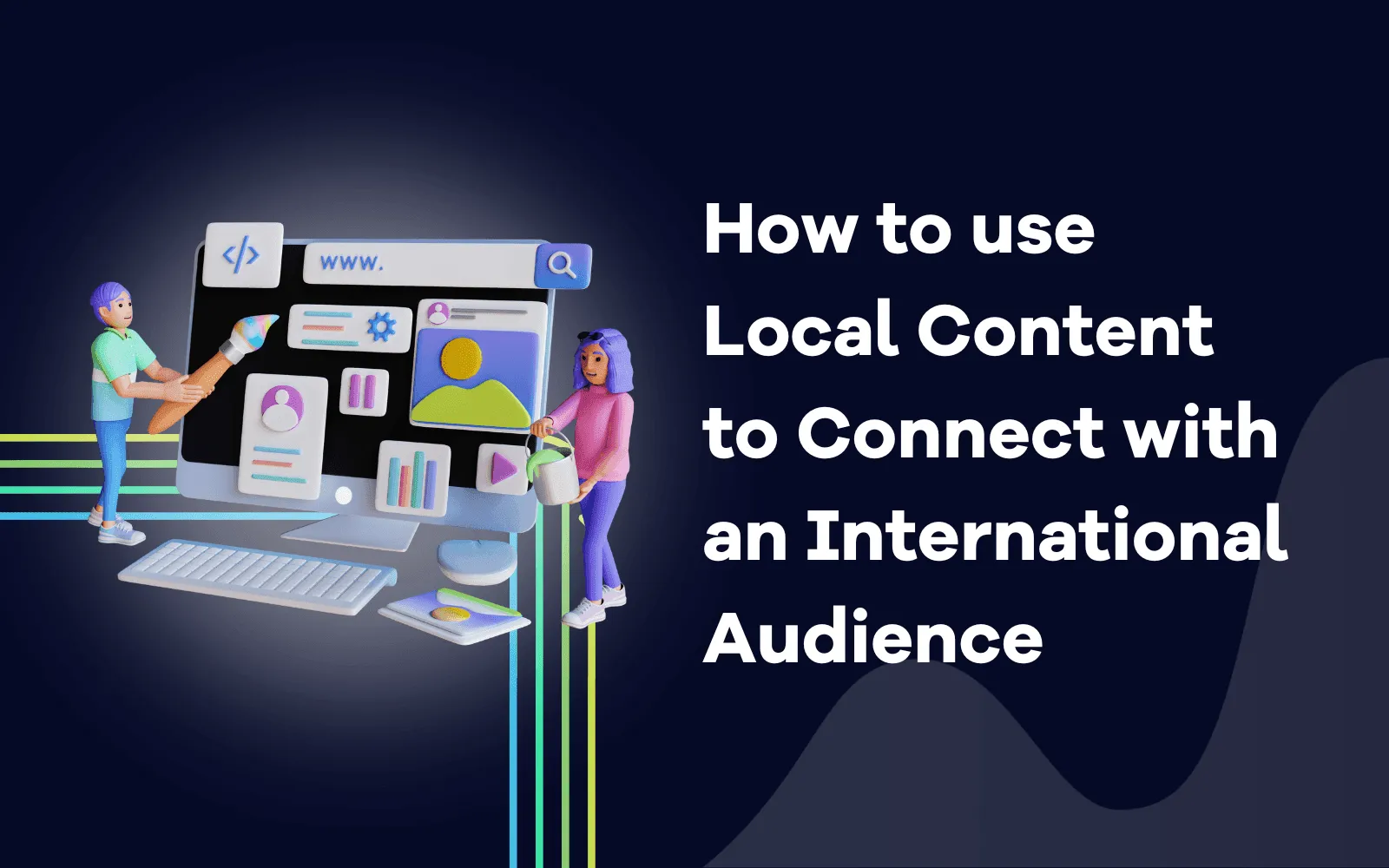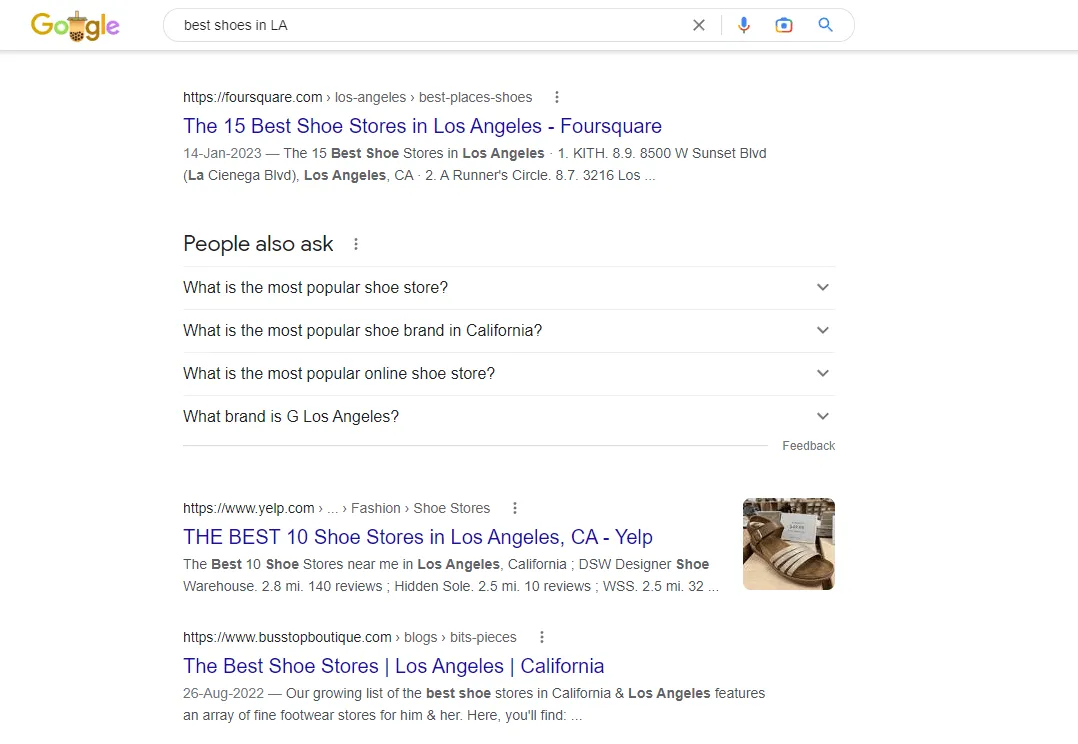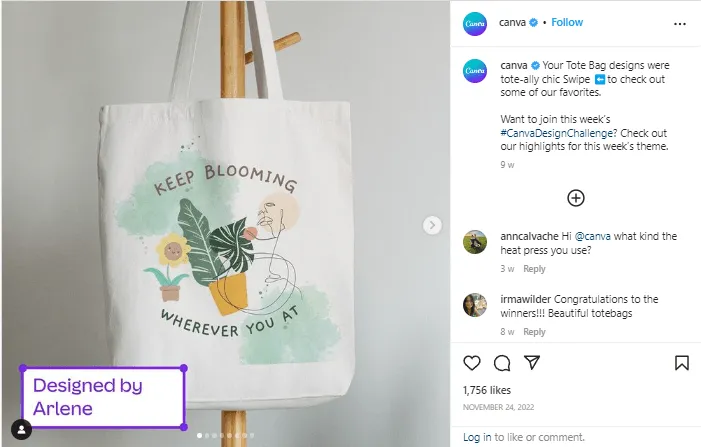
How to use Local Content to Connect with an International Audience?

Snehal Waghmare
January 24, 2024
Explore effective strategies on leveraging local content to engage and resonate with a global audience. Learn how to bridge cultural gaps, tailor content for diverse markets, and build a connection that transcends borders.
The internet has connected the world with a virtual string. Access to numerous variants of products is just a click away. No matter where you are, you can have what you want without leaving the comfort of your home.
Such accessibility has also made the market competitive. Companies across industries are innovating and experimenting with creative marketing approaches.
Local content marketing is when companies curate content according to geographical segments. It focuses on delivering information that is relevant and unique to those in your area.
Such personalized content helps consumers relate because it represents their experience, language, and culture. It makes a brand stand out and pursues people to choose it over the competitors.
But brands must target the global audience if they aspire to scale. For that, the traditional approach to creating local content is not enough. You must find ways to use that content to target your international audience as well.
In this article, we will discuss ways to blend local content with your international marketing strategy.
Identifying Local Content Opportunities
To curate appealing local content, you need to identify opportunities relevant to a particular geographical region. But with so much published content every day, how do you find worthwhile opportunities that help you lean on the global aspect as well?
Here are some ways:
Competitor analysis
One of the best ways to catch every local content opportunity is by keeping an eye on your competition. Target rival brands of your region that are actively targeting an international audience.
Then, thoroughly examine what type of local content they are publishing. This will give you a rough idea of how to proceed. Analyzing your competitors also shows you what worked for them.
SERPs
Search Engine Results Page (SERP) is one you see after submitting a search query. Besides organic search results, SERPs usually include paid search and pay-per-click ads.
The best content comes to you when you put yourself in your target audience’s shoes. SERPs help you to do that. Don’t know what content to produce? Type in relevant keywords and examine the results. You will get an endless list of popular local content topics you can use to create valuable resources.
The best perk of using SERPs is that it gives you local results you can structure to fit a wide range of audiences.

For example, the above screenshot shows “best shoes in LA” as the input. While the search results are mostly showing blogs relevant to LA, similar questions are targeted to the whole state. The blogs are primarily targeted to cater to the local audience. But it can add value to someone from a foreign country planning to visit the city.
Existing data
While researching new local content opportunities is important, you should also look into the existing content in your SaaS content marketing strategy. Understanding your existing data will help you identify the untapped areas and make better content decisions.
You can use tools like Google Search Console. It will show you which one of your existing content brings you the most visibility. This means Google has deemed your existing content relevant to this topic.
This way, you get existing pieces you can modify with internationally relevant elements and use them to build on and create more authoritative content.
Keyword research tool
To get inspiration that also helps you rank higher than your competitors, your keyword research has to be flawless. You must strike a balance between locally and internally relevant keywords in your content.
Searching keywords can also inspire you to create new and effective content. There are several keyword research tools available to implement business automation here. You can type in the relevant local keywords, and the tool will find topics that generate the most audience. These tools also show you the search volume of the keywords and help you organize specific content based on shares, links, and interactions. We used keyword research tools to identify the search volume behind keywords like free procreate brushes and went on to create pages and posts for that term. This helped us get quality leads.
Customer feedback
The primary goal of creating content is to add value to your audience while boosting the visibility of your brand. Who is better equipped to provide content opportunities than the ones you are catering the content to?
Take the customer feedback into account and see what they demand from you. Track the international audience and how to engage with your brand. This will help you identify unexplored opportunities of appealing to a global audience without changing your focus from local content.
Creating Local Content
Now that you have identified local content opportunities, it's time to execute your vision. Remember, your primary target is your local audience. So, don’t forget to add different geographically relevant elements for each region you are targeting. It has to be simple and easily relatable.
Once you do that, find some points in your content that match your international competitor’s marketing strategy. Try to blend a few global elements into your copy. Make sure the content doesn’t sound forced.
For example, if you’re talking about tax software, you can’t force content related to creating sales strategies.
Here are certain elements of content creation you should focus on while targeting a global audience:
Keywords
We can’t stress the importance of keywords enough. Find relevant local and global keywords and add them to your content naturally. The key here is to keep a locally relevant tone while keeping a healthy balance of globally relevant elements.
Internal links
If you have a relevant resource or page that will add value to the user, interlink it into your content. This will bring traffic to your websites and increase your brand visibility.
Backlinks
Look into any opportunity to reach out to other websites or publications. See if they are interested in linking your content across their website. Creating an effective digital PR strategy will help you here.
Promoting Local Content
Once you create your content, it's time to get creative with promotions and reap the benefits. Think about your audience’s user journey. This will help you identify channels that are best to target both local and international audiences.
Here are some ways to promote your content:
Social media
The entire world is present in the virtual space. So, what can be a better option to reach a global audience with your content than your social media platforms?
Creating content is only the beginning. To get the best outcomes, you need to promote them on social media. Platforms like Facebook, Instagram, TikTok, and YouTube are ideal for content marketing and automate your publishing process too. If you are a B2B business, LinkedIn and Twitter will be the ideal platforms for your local content.
Audit your funding data and fix a budget for social media marketing. This will help you target the relevant channels and maximize ROI. Use Instagram stories — post polls and Q&A sessions to increase the audience.
Besides posting new content, promote your older content from time to time. Keep your global audience in mind and add catchy captions accordingly. This will prompt them to click on your local content and help you gain new followers.
You also need to be consistent with your posting schedule. See when your target audience is the most active. These are the times your content will get the most engagement.

Canva promotes its user-generated content under the #CanvaDesignChallenge. The brand invites people from around the world to send unique and original images created by them and showcases the top 5 on their social media. This helps them appeal to and interact with a global audience.
Canva also posts informative visual slides on its Instagram and regularly promotes these contents on stories.
Emails

You can promote your content through email marketing like Canva. Consider running a weekly or monthly newsletter and marketing content that is relevant to the particular leads and customers. Make sure your emails have context when pushing your content.
Measuring Success
Effective content marketing can help you target your international audience with your local content and bring better business. But to sustain that growth, you need to make constant improvements to accommodate ever-changing customer expectations.
You must understand what’s working and what isn’t to keep a hold of your audience. For that, constant monitoring of different KPIs and measuring success rates are crucial.
Use analytics to track changes in metrics like engagements, reach, and leads. Use social listening to see what your target audience expects from you and what’s not appealing to them. Conduct penetration testing to understand the impact of your marketing.
These will help you reevaluate your strategy whenever necessary and grow your brand with your audience. You will be better equipped to design your local content in a way that’s equally intriguing to a global audience.
Conclusion
Creating entirely different sets of content for local and global audience pose the danger of creating a confusing brand image. Here, crafting your local content by blending globally appealing elements is the smart way to go.
Use pertinent keywords, regularly update your content, and promote them consistently. Track the important metrics, and don’t forget to make constant improvements.
This will help you optimize your resources, build a community that transcends borders, and bring increased revenue.
Related blog posts
The Hidden Flaws in Search Volumes and How to Solve Them
Learn how AI Search Volume delivers reliable search volumes by combining GKP, GSC, and Trends so that you can prioritize the right keywords.
1 July 2025
AI Overviews Are Taking Over SERPs
From traffic drops to decreasing CTRs, AI Overviews are shaking up SEO. Learn what is happening and how AccuRanker helps you track AIO.
25 June 2025
How AccuRanker’s AI Models Fix Inaccurate SEO Data
Struggling with unreliable SEO data? Discover how AccuRanker’s CTR, Search Intent, Search Volume, and Share of Voice deliver accurate insights.
1 June 2025




